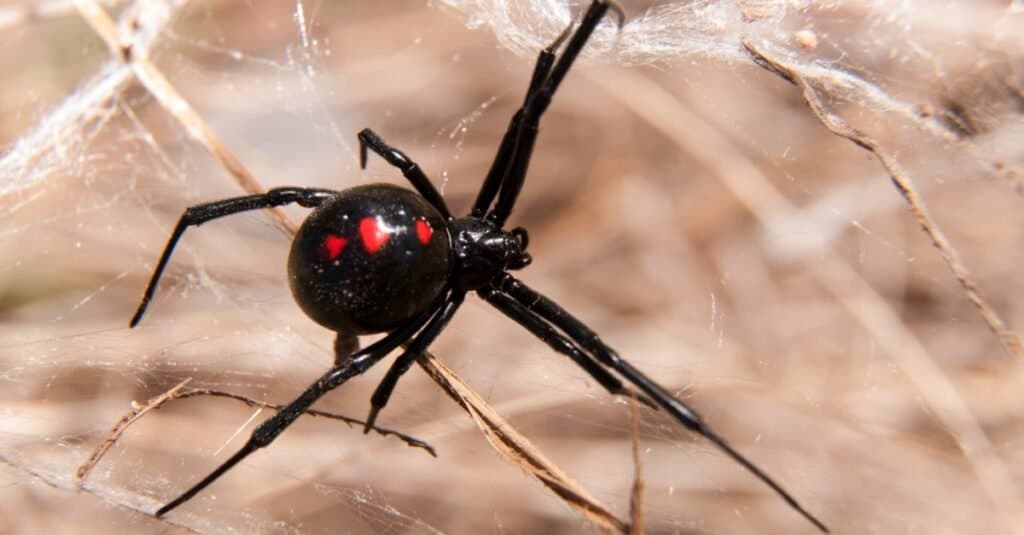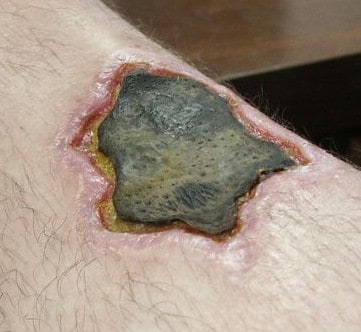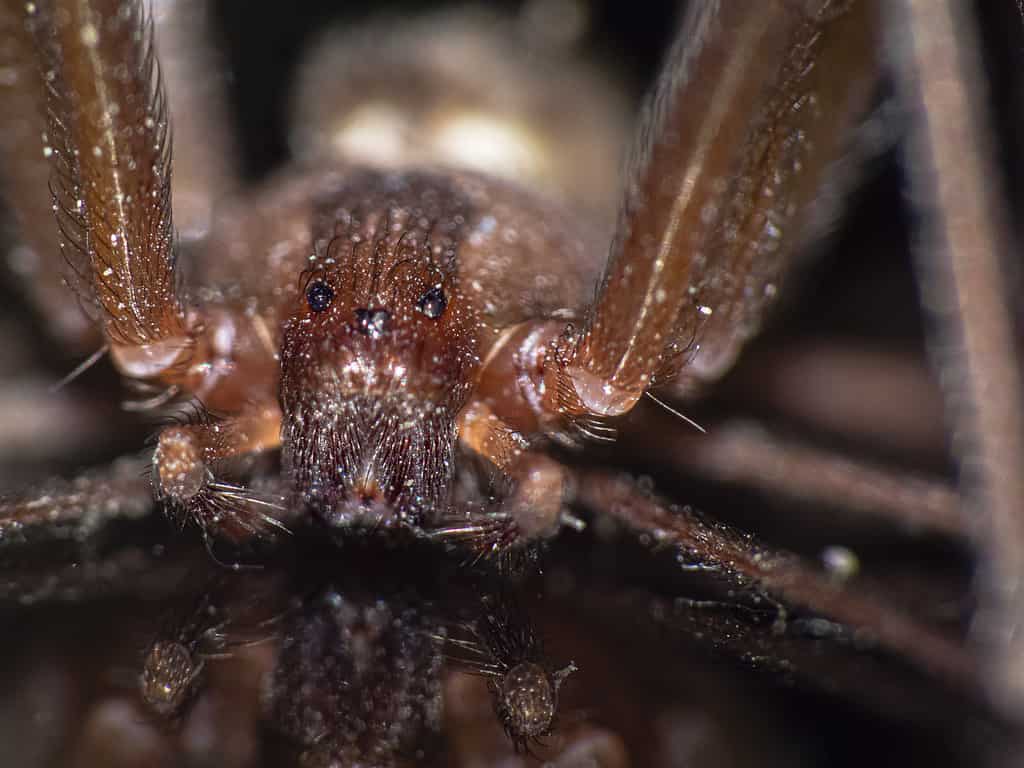Introduction
If you live in the lower half of the United States, it’s highly likely that you’ve encountered a brown recluse before. If you haven’t, you’re lucky because these creepy crawlies are venomous spiders that like to hide in any home they come across. While brown recluses might seem formidable, they are rather small, and their venom is rarely life-threatening to humans. Discover the length and weight of a brown recluse and find out what other spider species compare in size.
Background on Brown Recluse Spiders
Brown recluse spiders are also called violin spiders due to their unique appearance. The brown recluse has a dark shape on the cephalothorax, the front part of its body, that looks like a violin. The coloration of this spider is usually light brown, tan, or muted yellow. The brown recluse has six eyes positioned in two rows on its head.
These creepy crawlies are venomous and native to the United States. The venom of the brown recluse is transmitted through a bite, which is highly painful. The venom breaks down the outer walls of blood vessels near the bite and, occasionally, causes an ulcer. If treated, the venom will not be fatal, but the healing process of the bite victim may take several weeks to a few months to come to completion.

The brown recluse spider is often identified by the violin-shaped marking on its body.
©Nick626/Shutterstock.com
How Big Do Brown Recluse Spiders Get?
The average length of a brown recluse is around a fourth of an inch with a leg span of one inch. Most brown recluse spiders are around the size of a quarter. In addition, brown recluse spiders weigh around 0.5 grams or greater. However, the weight of a spider is rarely a factor in calculating its size. Most spiders weigh very little, so experts usually disregard weight as a characteristic of a spider’s overall dimensions.
Another venomous spider common to the United States, the black widow, is slightly larger than the brown recluse. The body of a black widow averages 0.4 inches in length. Including their legs, the black widows measure between one and 1.5 inches in total length. Thus, the size of the two venomous spiders is relatively similar.
Unlike the brown recluse and the black widow, the wolf spider is non-venomous. Similar to the two spiders, though, the wolf spider is often found in homes throughout the United States. The wolf spider is larger than the two species. Its body measures one inch, and its legs measure around one inch, too. Thus, the total length of the wolf spider lies around two inches on average. However, there are many different species of wolf spiders across the United States, all of which can vary in length and size.

Black widow spiders are around the same size as the brown recluse, and they are venomous.
©Sari ONeal/Shutterstock.com
Comparison of House Spider Size
Reference the table below to see size comparisons between 10 common house spiders in the United States.
| Spider | Known Body Length | Estimated Leg Length | Estimated Total Length | Toxic to Humans |
|---|---|---|---|---|
| American House Spider | 0.15-0.24 inches | 0.76-0.85 inches | 1 inch | No |
| Wolf Spider | 1 inch | 1 inch | 2 inches | No |
| Black Widow | 0.4 inches | 0.6-1.1 inches | 1-1.5 inches | Yes |
| Brown Recluse | 0.25 inches | 1 inch | 1.25 inches | Yes |
| Daddy Longlegs | 0.12-0.28 inches | 0.78-5.9 inches | 0.9-6.18 inches | No |
| Hobo Spider | 0.28-0.63 inches | 1.5+ inches | 1.78-2.13+ inches | No |
| Jumping Spider | 0.04-0.98 inches | 0.09-0.23 inches | 0.13-0.98 inches | No |
| Yellow Sac Spider | 0.12-0.6 inches | 0.13-0.51 inches | 0.25-0.63 inches | Yes (rarely) |
| Orb Weaver | 0.5-1.5 inches | up to 5 inches | 0.5-6 inches | No |
| Grass Spider | 0.3-0.75 inches | 0.25-0.7 inches | 1+ inches | No |
Brown Recluse Venom and Medical Treatment
Most believe that brown recluse bites result in necrotic lesions. Necrotic lesions are often associated with spider bites, and they destroy portions of tissue. In other words, necrotic lesions are a type of infection in which bacteria negatively impacts the skin or tissues beneath the skin. If these infections are left untreated, death can occur within a short period. However, infections of this sort are rare, and 90% of brown recluse bites do not result in serious harm to the human body.
The other 10% of brown recluse bites cause dermonecrotic lesions. These infections are related to human skin. When a dermonecrotic lesion due to a brown recluse bite occurs, it may take a couple of weeks to fully form. The bitten area will begin to turn black, dry out, and fall off. After between two and four months, the infection will heal. People most at risk of serious harm from a brown recluse bite are children and people that struggle with obesity. Both groups are more sensitive to dermonecrotic lesions, and such infections can result in death.
However, most brown recluse bites are poorly diagnosed by medical professionals. Research shows that most diagnoses of brown recluse bites are related to other issues, such as chemical burns, ulcers resulting from diabetes, and contact with poison ivy. In addition, brown recluses can be highly pervasive in a home without biting the individuals living in it.
Brown recluse spiders are more likely to bite when they feel trapped or threatened. For instance, a bite may occur if someone puts on a shoe or article of clothing in which a brown recluse is hiding. If a person simply sees this spider from a small distance, it is unlikely that the brown recluse would intentionally bite the person.

Necrotic lesions resulting from a brown recluse bite turn black and eventually fall off.
©CC BY 2.0 – License
Places You’re Most Likely to Encounter Brown Recluse Spiders
The brown recluse is commonly found in the southern and western United States. However, the violin spider has also moved into the North. In the wild, brown recluses reside in habitats like caves, burrows, or other enclosed spaces. Most people encounter brown recluses in their homes, though, as this spider enjoys hiding in attics, storage closets, vents, and holes in walls or ceilings.
Brown recluses also hide in clothing and shoes, between papers, under furniture, and inside boxes. Thus, people should prioritize keeping their homes clean and picking up their clothes and other personal items off the floor. Leaving clothes, shoes, and boxes scattered about the house invites in a brown recluse. Since this spider species searches to hide in enclosed spaces, it is crucial to keep the home clean to avoid a venomous spider infestation. This is particularly important for those with children, as children are a highly vulnerable group regarding brown recluse bites.
How to Identify Brown Recluse Spiders
If you believe that a brown recluse might be in your home, it’s important to know how to identify one. First, people should be aware of where brown recluses live. In the United States, this spider is most prevalent in the South and West. These portions include states like Texas; Tennessee; Kentucky; Alabama; portions of Georgia, Arizona, and California; and more.
While the violin design located on the front portion of the brown recluse might indicate the spider’s presence, this method of identification is not always reliable. The best way to identify a brown recluse is to look at its eyes. While most spiders have eight eyes divided into two rows (four on either side of the head), the brown recluse only has six eyes divided into two rows (three on either side of the head).
Another way to identify a brown recluse is to look at its legs and body. The legs of this spider species do not have any unique patterns. Rather, brown recluse legs are all one color, typically a light tan or yellow. The legs have fine hairs on them, but they do not have any spines. In addition, the abdomen color of the spider is uniform. Most brown recluses have a cream-colored or dark brown abdomen. However, the body coloration of a brown recluse will fluctuate according to what they eat. The average body length of a brown recluse measures approximately 3/8 of an inch.

Brown recluses have six eyes divided into two rows.
©iStock.com/Wirestock
The photo featured at the top of this post is © Keith Davis/Shutterstock.com
Thank you for reading! Have some feedback for us? Contact the AZ Animals editorial team.






